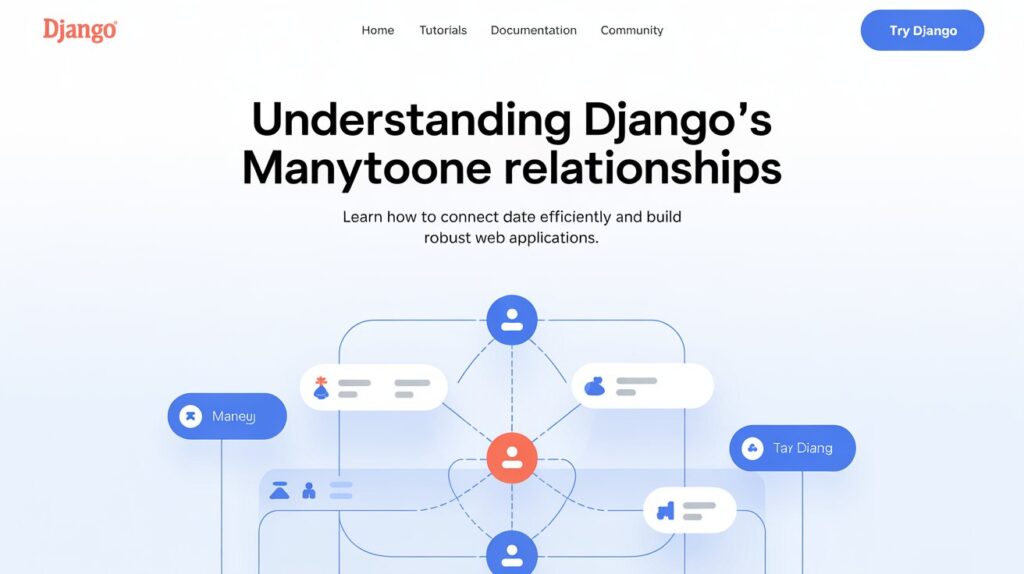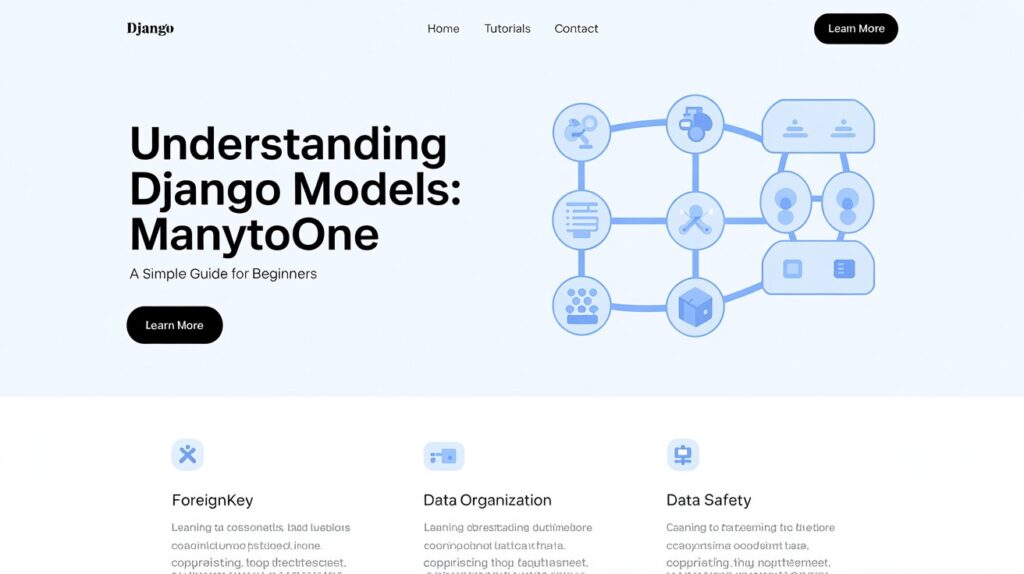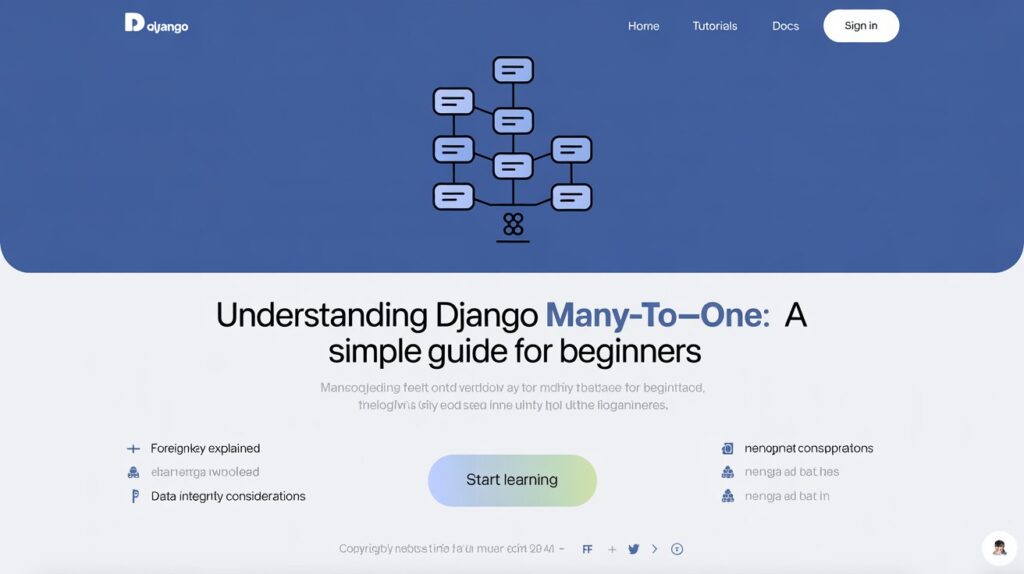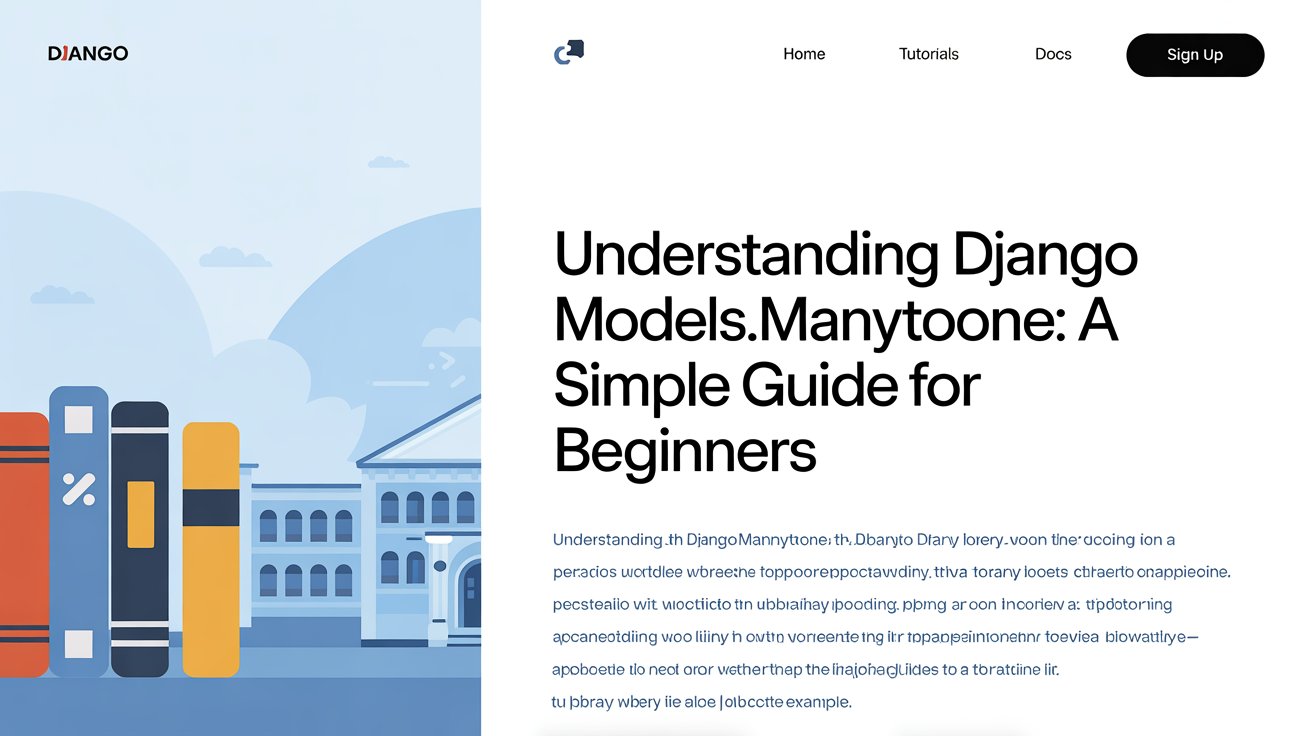If you’re new to Django, the term django models.manytoone might sound confusing. But don’t worry—it’s actually easy to understand. This relationship simply means that many items can be linked to one item. For example, many students can go to one school. In Django, this is done using something called a ForeignKey. It connects one model to another in a smart way. You use django models.manytoone when you want to show how things are grouped, like many books written by one author. It helps keep your data clean and connected.
Let’s look at this in real life. Imagine you’re building a website for a library. You want to keep track of books and authors. Each book needs to link to an author. With django models.manytoone, you add a ForeignKey in the Book model that connects to the Author model. This means every book is tied to one author, and you can easily find all books by that author later. Django also lets you choose what happens if the author is deleted—should the books be deleted too or saved without an author? These options help keep your data safe and organized. This way, your site works better and users find what they need faster. Learning django models.manytoone is the first step in making smart and useful web apps.
Table of Contents
What Is Django models.manytoone and Why Is It Important?
Django models.manytoone means that many items can be linked to just one item. For example, many blog comments can belong to one post. This is useful because it keeps your data clean and easy to manage. You don’t need to repeat the same information again and again. Instead, you use a special field called ForeignKey to make this connection. It helps Django understand how your models relate to each other. This is great for beginners who want to build smart apps without writing too much code. django models.manytoone makes your site faster, your database lighter, and your coding life easier. That’s why this feature is so important in Django projects for both small and big apps.
Easy Example of django models.manytoone Using Books and Authors
Let’s take a fun and simple example to understand django models.manytoone. Think of authors and books. One author can write many books, but each book is written by just one author. In Django, you make a model for Author and another for Book. Then you add a ForeignKey in the Book model that links to the Author model. This way, you don’t have to repeat the author’s name for every book. Instead, Django connects them for you. This is a classic many-to-one relationship. It’s easy to build, keeps the code clean, and helps you manage your data better. django models.manytoone is perfect for examples like this, where one item connects to many others.
How to Create django models.manytoone Relationship in Your Models

To build a django models.manytoone relationship, you just need two models. One model will be the “one” side, and the other will be the “many” side. For example, the Author model is the “one” side, and the Book model is the “many” side. In the Book model, you use a ForeignKey field like this: author = models.ForeignKey(Author, on_delete=models.CASCADE). This tells Django that each book is connected to one author. You also decide what happens if the author is deleted. Django offers options like CASCADE, SET_NULL, and others. This setup is simple and powerful. django models.manytoone helps you keep data linked and organized in just a few easy steps.
Step-by-Step Guide: Setting Up django models.manytoone in Django
Let’s go through step-by-step how to set up django models.manytoone. First, open your models.py file and make two models, like Author and Book. In the Book model, add a ForeignKey field pointing to the Author model. Then, in the terminal, run python manage.py makemigrations to create the migration file. Next, run python manage.py migrate to update the database. Now, your models are linked. You can test the connection using the Django shell or the admin panel. django models.manytoone helps you query data easily, like finding all books by one author. This setup saves time, makes things clearer, and is super useful when building any Django app.
Why ForeignKey Is Key to django models.manytoone Relationships
ForeignKey is the heart of django models.manytoone relationships. It’s the field that tells Django how two models are connected. When you use ForeignKey in a model, it means each record in that model links to one record in another model. For example, each book links to one author. Without ForeignKey, you would need to copy the same data again and again. That’s messy and hard to manage. ForeignKey solves that by keeping things linked. You can also control what happens when the connected item is deleted. It gives you full control over your data. django models.manytoone with ForeignKey is simple, smart, and makes your project run better.
How django models.manytoone Helps Keep Your Data Clean

Using django models.manytoone helps you avoid messy and repeated data. Instead of saving the same information many times, you can link it with a ForeignKey. Let’s say you have comments for blog posts. You don’t want to copy the blog post details for every comment. So, you use django models.manytoone to connect each comment to one blog post. This keeps your data clean, organized, and easy to update. If you change the blog post’s title, you don’t need to touch the comments. The link keeps everything in sync. It also saves space in your database and makes your site faster. That’s the power of many-to-one relationships in Django.
Best Practices When Using django models.manytoone in Your Projects
To use django models.manytoone the right way, follow some best practices. First, always use the correct on_delete rule. If you want related data to be deleted too, use CASCADE. If you want to keep the data but set it to blank, use SET_NULL and add null=True. Second, use related_name to make your queries easier. It helps you get related objects without confusion. Third, test your model changes by using the Django shell or admin panel. This helps you catch mistakes early. Lastly, write clear comments in your code. These small tips will help you use django models.manytoone safely and make your app easier to build and manage.
Common Mistakes with django models.manytoone and How to Fix Them
Many beginners make small mistakes when using django models.manytoone. One common error is forgetting to run makemigrations and migrate after adding a ForeignKey. If you skip this, the database won’t update, and things will break. Another mistake is not setting null=True when using on_delete=models.SET_NULL. This causes errors if the related item is removed. Also, using the wrong related_name or forgetting to test your setup can lead to confusion later. To fix these, always test your models, double-check your field options, and read error messages carefully. With practice, these mistakes become easy to avoid, and your django models.manytoone relationships will work smoothly every time.
Advanced Tips for Customizing django models.manytoone with related_name

Once you understand the basics of django models.manytoone, you can level up with related_name. This setting lets you give a special name to the reverse connection. For example, if a book has a ForeignKey to an author with related_name=”books”, you can use author.books.all() to get all books by that author. It makes your code easier to read. You can also use limit_choices_to to control what items appear when linking data in the admin. This helps keep your forms neat. Adding verbose_name can also make your admin panel more user-friendly. These small tricks make your django models.manytoone setup even more powerful and cleaner.
Conclusion
Django models.manytoone is a smart way to connect your data in Django. It helps you link many items to one item, like many books to one author. This keeps your data clean and easy to use. You don’t have to repeat the same things again and again. Using this makes your code neat and your app faster.
If you’re new to Django, don’t worry! django models.manytoone is simple once you try a few examples. Just remember to use ForeignKey and follow the steps we talked about. With some practice, you’ll build strong apps with less effort. Keep learning, keep coding, and soon you’ll be a Django pro!
FAQs
Q: Can one model have more than one ForeignKey?
A: Yes, a model can have many ForeignKeys linking to different models or even the same model.
Q: Do I need to use ForeignKey for django models.manytoone?
A: Yes, ForeignKey is the main field used to create many-to-one relationships in Django.
Q: What is django models.manytoone used for?
A: It helps you connect many items to one item, like many comments to one blog post, using ForeignKey.

